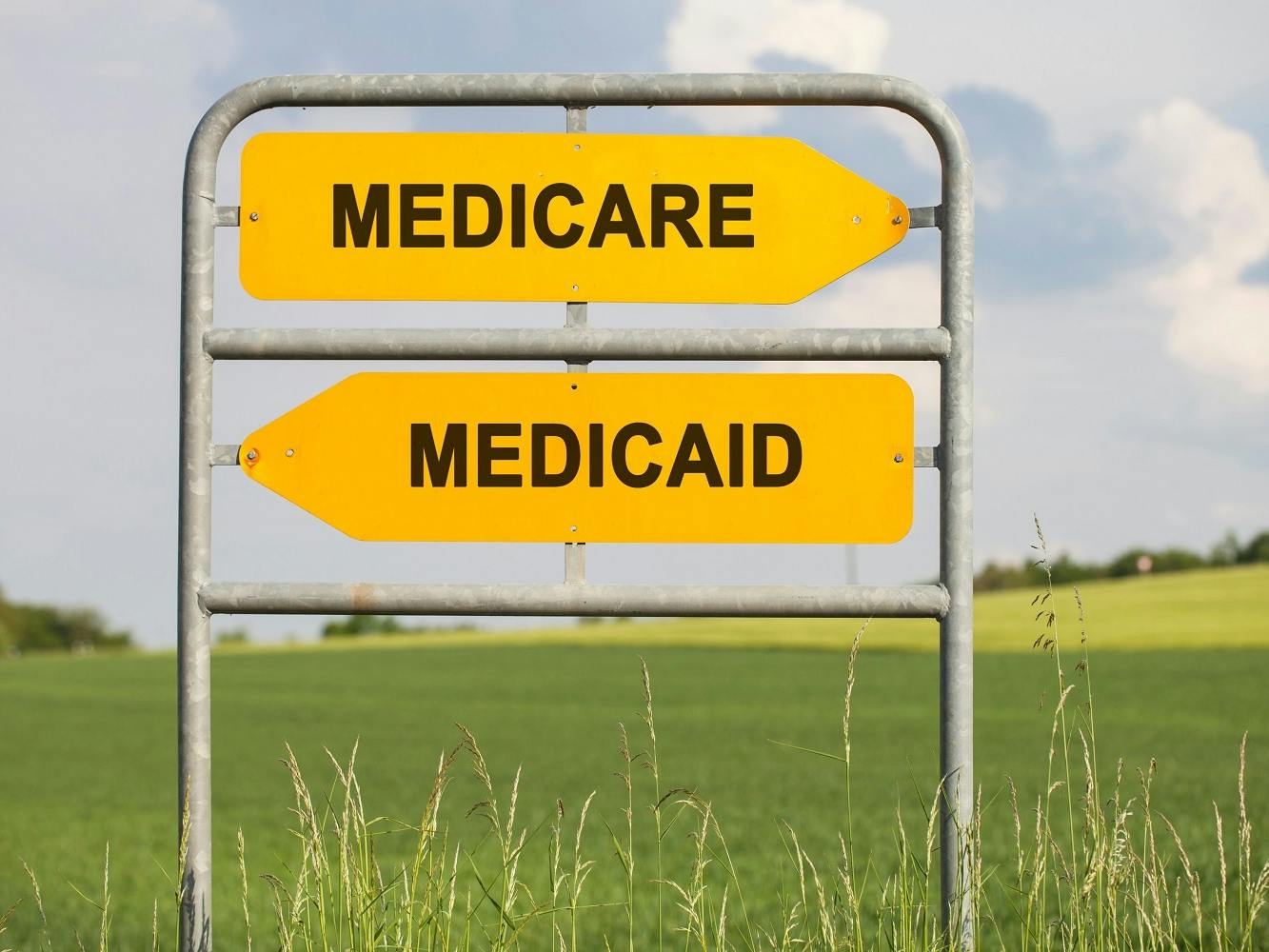

Written By
DONNA FREDERICK Last Updated

If you qualify for both Medicare and Medicaid, you're what's known as dual eligible - and your state Medicaid program will pay your Part B premiums.
Medicare provides medical coverage and benefits to people age 65 or older, or who have a qualifying disability. Medicaid is a federal and state program that helps with medical costs for some people with limited income and resources and also offers benefits not normally covered by Medicare.
In most cases, even if you have Medicaid, you must enroll in Medicare when you’re eligible. This is because Medicare is the primary insurance and will provide benefits and coverage for the health care services you need. If you do not enroll when you’re eligible, you may face a late enrollment penalty.
That said, you are able to be enrolled in both Medicare and Medicaid at the same time, and just because you become eligible for Medicare does not mean you’ll lose Medicaid. This is called dual eligibility, and more than 12 million people are dual-eligible each year.
Understanding when you’re eligible, how to be eligible, and how Medicare and Medicaid work together can help bring clarity to your healthcare coverage needs.
The difference between Medicare and Medicaid is that Medicaid eligibility is based on income, while Medicare eligibility is based on age or disability status. Medicare coverage includes Part A (hospital care) and Part B (medical care, like physician services, durable medical equipment, and outpatient care).
If you are eligible for Medicare and Medicaid, there are a few ways in which they work together to cover the services you need:
1. Medicaid can provide financial assistance. If you have both Medicare and Medicaid, you are typically automatically enrolled in a program that helps provide financial assistance for health care. Depending on your circumstances, you could fall into one of these programs:
Medicaid can help pay for the Medicare Part B premium, Part B deductible, Part A deductible, as well as copays and coinsurance for Part A and Part B services.
2. Medicaid can help with care coordination. In some states, you may be required to enroll in Medicaid private health plans, or Medicaid Managed Care (MMC) plans. Through these plans, you may be given an option to enroll in a Medicare Advantage plan. These plans are designed to help better coordinate care and Medicare and Medicaid benefits together.
3. Medicaid can provide services Medicare doesn’t cover. If you have Medicare, most of your health care needs are covered. However, there are some that are not. This is where Medicaid can help because Medicaid covers some services Medicare does not. Services Medicaid may cover include:
It’s important to know that you will not lose Medicaid eligibility because you become eligible for Medicare. As long as your income falls under the Medicaid eligibility requirements in your state, you will receive both Medicare and Medicaid coverage.
Some people may be eligible for Medicare due to age or disability, as well as Medicaid due to income or other state requirements. If you are eligible for both Medicare and Medicaid, you have dual eligibility. Between the two, most of your health care costs will likely be covered and you may not have to pay anything out-of-pocket.
With dual eligibility, you can get your Medicare coverage through Original Medicare, or through a Part C Medicare Advantage plan. You will get your Part D prescription drug benefits through Medicare as well, and you’ll automatically qualify for Extra Help paying for your Part D coverage. That said, Medicaid may still cover some drugs and other care that Medicare doesn’t cover.
Note that even though you get Extra Help, you must still choose a Part D drug plan and enroll.
You can either be full benefit dual eligible, which means you have comprehensive Medicaid coverage, or partial dual eligible, which means you’ll receive help with Medicare premiums and other cost sharing.
Dual health plans are specifically designed for those who are dual eligible, and have both Medicare and Medicaid. They are a special type of Part C (Medicare Advantage) plan and they combine hospital, medical and prescription drug coverage. In most cases, there is a $0 premium.
These plans are offered by private insurance companies, so you can find one that best meets your coverage and health care needs.
Eligibility requirements vary from state to state, but typically take into consideration your income and financial assets. You can contact your Medicaid office to learn if you’re dual eligible for both Medicare and Medicaid.
Typically, beneficiaries earning less than 138% of the federal poverty level are eligible for Medicare and Medicaid. In most cases you also have to meet a limited savings requirement. Additionally, seniors living in a nursing home are typically dual eligible due to their age and financial circumstances.
If you have both Medicare and Medicaid, Medicare is the primary insurer and will pay first. Medicaid will then pay second. Medicaid never pays first for services covered by Medicare. It will only pay after Medicare, employer group health plans, and/or Medicare Supplement (Medigap) insurance has paid.
However, there are some services Medicaid covers and Medicare does not, such as nursing home care. In this case, Medicaid would pay for the service and Medicare would only be primary payer for any Medicare-covered services received.
Medicaid will also help pay for other out-of-pocket expenses such as Medicare premiums, deductibles and copays.